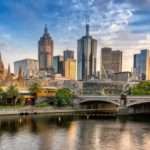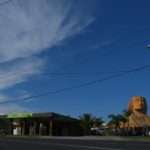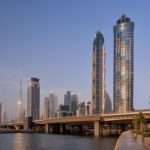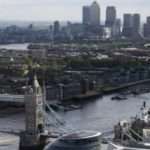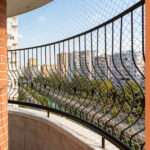by Lalaine C. Delmendo
Iceland’s property market remains strong, with Iceland´s economy strengthening. The nationwide residential property price index rose by 9.48% (8.39% inflation-adjusted) during the year to August 2016, the highest year-on-year increase since May 2014, according to the Statistics Iceland. In a quarterly basis, house prices rose by 3.18% (2.92% inflation-adjusted) in August 2016.
During the year to August 2016:
In Reykjavik, prices of single-flat houses rose by 8.1% (7% inflation-adjusted). Prices of multi-flat houses in the capital increased 11% (9.9% inflation-adjusted).
Outside the capital, residential property prices increased 5.4% (4.3% inflation-adjusted).
The average residential property price in Iceland was ISK42 million (US$ 344,000) in June 2016, up 12.3% from the same period last year, according to news site visir.is. The central region saw the highest increase in property prices during the period because of strong demand and limited supply.
Iceland experienced an unprecedented housing boom from Q1 2000 to Q1 2008, with property prices surging 152.9% (71% inflation-adjusted), fuelled by rapid economic growth from 2000 to 2007, when the economy expanded by an average of 4.6% annually.
However, the collapse of Iceland’s banks in 2008 saw GDP shrink by 4.7% in 2009 and by another 3.6% in 2010. From Q1 2008 to Q1 2010, house prices fell by 15.1% (-32% inflation-adjusted).
To save the economy and to help homeowners, Iceland’s state-controlled banks have forgiven mortgage loans for more than 25% of the population since end-2008, equivalent to about 13% of the country’s annual GDP.
The economy bounced back in 2011, with a real GDP growth rate of 2%. In 2012, the country’s economic growth was 1.2%.
As the economy recovered, house prices rose – by 13.3% between Q2 2010 to Q4 2012. But this rise was partly illusory: when adjusted for inflation, house prices rose by just 2.6% over the same period.
The housing market has however grown robustly in the past three years, as demand for high-end properties has continued to rise.
In 2013, house prices rose by 8.7% (4.3% inflation-adjusted) from a year earlier.
In 2014, house prices rose by 6.1% (5.2% inflation-adjusted) from a year earlier.
In 2015, house prices increased 9.1% (6.9% inflation-adjusted) from a year earlier.
Iceland’s housing market is expected to remain strong in the medium term, amidst healthy economic growth. Residential property prices are projected to rise by 25% between 2016 and 2017, according to the Icelandic commercial bank, Islandsbanki.
In 2015, the economy grew by 4%, after 2% growth in 2014 and 4.4% growth in 2013. The Icelandic economy is expected to expand by 4.2% this year, and by another 3.2% in 2017, according to the International Monetary Fund (IMF).
Demand surging
In 2015, the total number of residential real estate sales contracts in Reykjavík rose by 17.5% to 6,900 units, according to Landsbankinn.
In June 2016, residential real estate sales contracts in the capital increased further by 82.7% y-o-y to 614. The total sales volume reached ISK25.8 billion (US$ 226 million) over the same period.
The continued increase in property demand has been fueled by booming tourism. In 2015, foreign visitor arrivals rose by 29.2% to about 1.29 million, according to Icelandic Tourism Board.
“With increased tourism there are now more foreign buyers every year,” says Ingólfur Gissurarson at Valhöll estate agency. “There are plenty of high-end, centrally-located developments coming on the market.”
“Most of the foreign buyers tend to be from the US,” says Grétar Jónasson of Iceland’s Association of Real Estate Agents, “but Icelanders living abroad are now buying second homes in Iceland.”
The total number of tourist arrivals in Iceland is expected to increase by 38.7% this year and by another 26.6% in 2017, based on government estimates.
Residential construction activity mixed
Residential construction activity in Iceland showed mixed results.
Countrywide:
The number of dwellings started almost tripled to 1,612 units in 2015 from a year earlier, according to Statistics Iceland.
The number of dwellings under construction rose by 15.7% y-o-y to 3,635 units in 2015.
Dwelling completions dropped 3% y-o-y to 1,120 units in 2015.
In the capital, Reykjavik:
Dwelling starts surged 165% to 1,513 units in 2015 from a year ago.
The number of dwellings under construction rose by 34% to 2,429 units over the same period.
Dwelling completions dropped 8% y-o-y to 877 units in 2015.
Krona strengthens against major currencies
During the global financial crisis, the value of the krone plunged sharply from ISK62.18 = US$1 inn December 2007, to about ISK121.45 per US dollar in December 2008.
Currency controls were imposed in November 2008 to protect the krona. The country engaged in a US$ 2.1 billion program with the IMFto stabilize the exchange rate, which involved imposition of controls on outflows of capital that were still in place in 2015. In May 2013, the central bank took a more active role, intervening in the foreign exchange market to stabilize the exchange rate.
In August 2016, the Icelandic krona appreciated against the US dollar by 11.6% from a year earlier, to reach a monthly average exchange rate of ISK117.94 = US$1 and by 11% against the euro with an average exchange rate of ISK132.18 = EUR1.
Healthy economic growth, improving public finances
From 2004 to 2007, Iceland’s average GDP growth was 6.4% annually, partly because the banking sector went on an ill-advised global lending binge. However during the global crisis, three of Iceland´s largest banks—Glitnir, Landsbanki, and Kaupthing—collapsed, defaulting on US$85 billion of debts in 2008.GDP contracted by 4.7% in 2009 and by another 3.6% in 2010, according to the IMF.
Iceland’s external debt ballooned to ISK14.34 trillion (US$125.6 billion) in 2008, up 93% from a year earlier. It further rose to ISK15.2 trillion (US$133.2 billion) in 2009. External debt started to fall again in 2010, as the economy recovered.
In 2015, the country’s external debt fell sharply to just ISK3.9 trillion (US$34.2 billion), from ISK12.4 trillion (US$108.6 billion) in 2013 and 2014, , according to the Central Bank of Island.
The economy had bounced back in 2011, with a real GDP growth rate of 2%, thanks to strong private consumption. In 2015, the Icelandic economy expanded by a healthy 4%, from 2% in 2014, 4.4% in 2013, and 1.2% in 2012. In the second quarter of 2016, Iceland’s real GDP growth expanded by 3.7% from the same period last year.
Iceland’s economy is expected to expand by 4.2% this year, and by another 3.2% in 2017, buoyed primarily by strong tourism sector, according to the International Monetary Fund (IMF). The Central Bank of Island is more optimistic, projecting a 4.9% growth this year. Private consumption is projected to increase by 6% this year and gross fixed investment by 10%.
The government’s budget deficit stood at 0.5% of GDP in 2015, after deficits of 0.1% in 2014, 1.8% in 2013, 3.7% in 2012, 5.6% in 2011, 9.8% in 2010, 9.7% in 2009, and 13.1% in 2008, according to the country’s Ministry of Finance.
The country is expected to record its first ever budget surplus in eight years of around 14.6% of GDP in 2016, amidst continued economic growth and moderate inflation.
Inflation remains low. In August 2016, inflation fell to 0.9%, down from 2.2% in the previous year. From an average of 12.3% in 2008-09, the average inflation rate fell sharply to 4.9% in 2010-12 and to an average of just 2.5% in 2013-15.
In August 2016, the Central Bank of Island cut its benchmark seven-day collateralised lending rate by 50 basis points to 5.25%. It was the first rate change since a 25 basis point increase in November 2015 and the first rate cut since December 2014.
In August 2016, unemployment fell to just 2.9%. Iceland’s jobless rate is expected to fall to 3.8% this year, from 4% in 2015, 5% in 2014, 5.4% in 2013, 6% in 2012 and 7.1% in 2011, according to the IMF.
With a population of only 329,000 in 2015, Iceland one of the wealthiest and most developed countries in the world. GDP per capita was US$50,855 in 2015, according to the International Monetary Fund (IMF). This small country also has low taxes compared to other OECD countries.
The economy is heavily dependent on fishing, which provides 40% of export revenues and employs 7% of the workforce. However in recent years, the country diversified into manufacturing and service industries.
Let’s block ads! (Why?)
Source: Global-Property-Guide
Iceland’s house prices surging, amidst healthy economic growth









